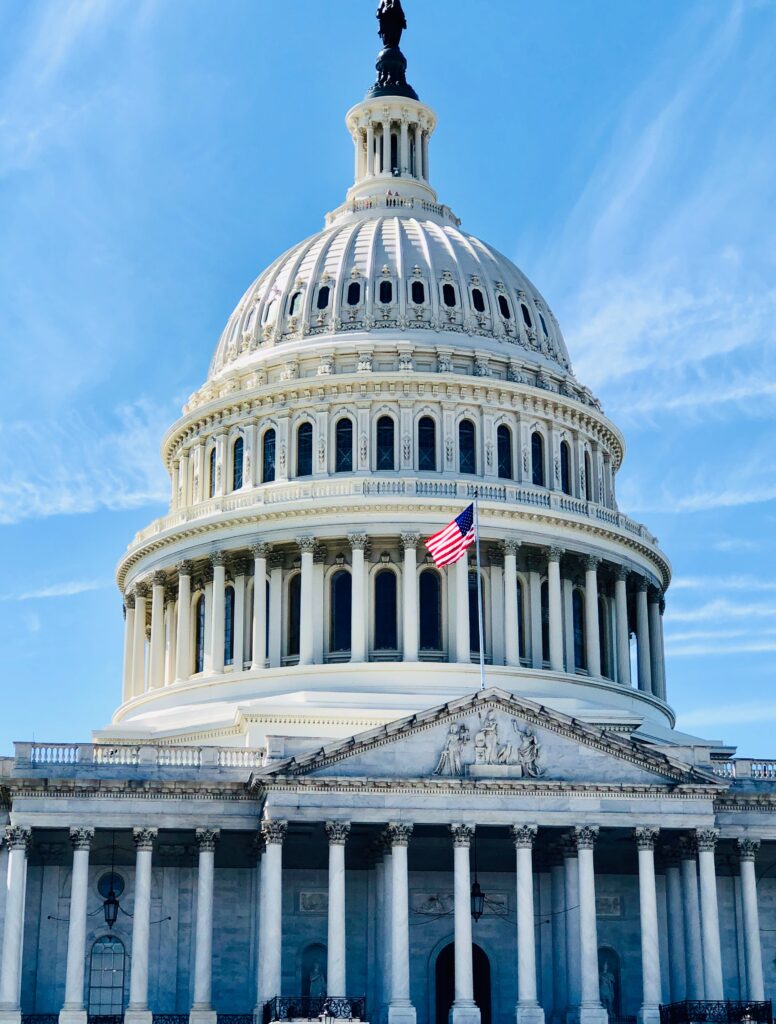Over the past two election cycles, Hispanic voters have been one of the most important voting blocs, with both Republicans and Democrats attempting to win over this constituency. This once reliably-Democratic demographic has seen Republicans make large gains in recent election cycles. Despite these gains, PRRI’s American Values Atlas surveys from 2013 through 2022 show that Republicans may have a long way to go as Hispanic support for the Democratic party remains strong. [1]
Hispanic Americans’ Party Affiliation
Since 2013, the percentage of Hispanic Americans who identify as Republican has steadily risen almost every year. In 2013, only 10% of Hispanics identified with the Republican party, with that percentage staying consistent through 2016 (10%) and 2017 (11%). The share of Hispanic Republicans began to increase in 2018 (12%), reaching 16% in 2021 and staying the same in 2022.
The percentage of Hispanic Americans who identify with the Democratic party has been less consistent, ranging from a low of 31% in 2017 and 2018 to a high of 41% in 2021. In 2013, Hispanic Democrats were 34%, while 38% identified with the party in 2022, slightly lower than the highest percentage in 2021 (41%).
Hispanic independents are the group that has fluctuated most, with the highest percentage identifying as independent in 2014 and 2018 at 45%, and the lowest in 2021 at 27%. In 2013, the percentage of Hispanic independents was 41% and stayed in the mid-forties until dropping in 2021. In 2022, 29% of Hispanic Americans identified as independent.
Hispanic Americans’ Party Affiliation by Religious Tradition
Looking at the breakdown of party affiliation by religion, the highest share of those who identify as Republicans is among Hispanic Protestants, a percentage that nearly doubled from 17% in 2013 to 29% in 2022. The percentage of Hispanic Protestants who identify as Democrats has remained steady, reaching 35% in 2021 and never dropping below 28% (2017, 2018, and 2022).
Among Hispanic Catholics, the percentage who identify as Republicans remains low but has steadily increased from 9% in 2013 to a high of 13% in 2021 and 14% in 2022. The percentage of Hispanic Catholics who identify as Democrats also increased since 2013 (38%), hitting a low of 35% in 2018, but then reaching a high of 53% in 2021. In 2022, the percentage of Democrat Hispanic Catholics was down to 44%.
Among religiously unaffiliated Hispanics, the percentage who identify as Republican has stayed very consistent, with its lowest at 6% in 2016. This number inched up to 8% (2013- 2018) and then 11% (2019, 2020), and then came down slightly to 10% in 2021 and 2022. The share of Democratic unaffiliated Hispanics has fluctuated, with 30% in 2013, dropping to 28% in 2019, and then rising to 37% in 2021 and 36% in 2022.
Hispanic Americans’ Support for Donald Trump
Hispanic support for the Republican party’s standard bearer, former President Donald Trump, has fluctuated since 2019. Although 28% of Hispanic Americans had a very favorable or mostly favorable opinion of Trump in 2019, by 2020 it jumped to 35%. This value decreased significantly to 22% in 2021 before increasing slightly to 25% in 2022.
Among religious groups, the same pattern can be seen. In 2019, 37% of Hispanic Protestants viewed Donald Trump favorably, and by 2020 it jumped significantly to 50%, but notably decreased to 33% in 2021 before going back up to 44% in 2022. Among Hispanic Catholics, Trump favorability levels have remained somewhat consistent. In 2019, one in four Hispanic Catholics (25%) viewed Trump favorably; this went up to 28% in 2020 before decreasing significantly to 20% in 2021 and then slightly rising to 23% in 2022. Among unaffiliated Hispanics, the decline in Trump favorability levels has been consistent. Though Trump favorability levels were particularly high in 2020 among unaffiliated Hispanics at 30%, by 2021 (20%) and 2022 (15%), unaffiliated Hispanics were significantly less likely to view Trump favorably than they did in 2019 (26%).
[1]PRRI’s American Values Atlas was conducted by telephone via random digit dialing for both landlines and cell phones from 2013 to 2020. In 2021, the project transitioned to a probability-based online panel. In the transition, demographic and religious metrics were compared to ensure the two sources were comparable; however, it is possible that the change in survey mode from telephone to internet caused some small additional changes to the data beyond the usual sampling error that accompanies all surveys.
